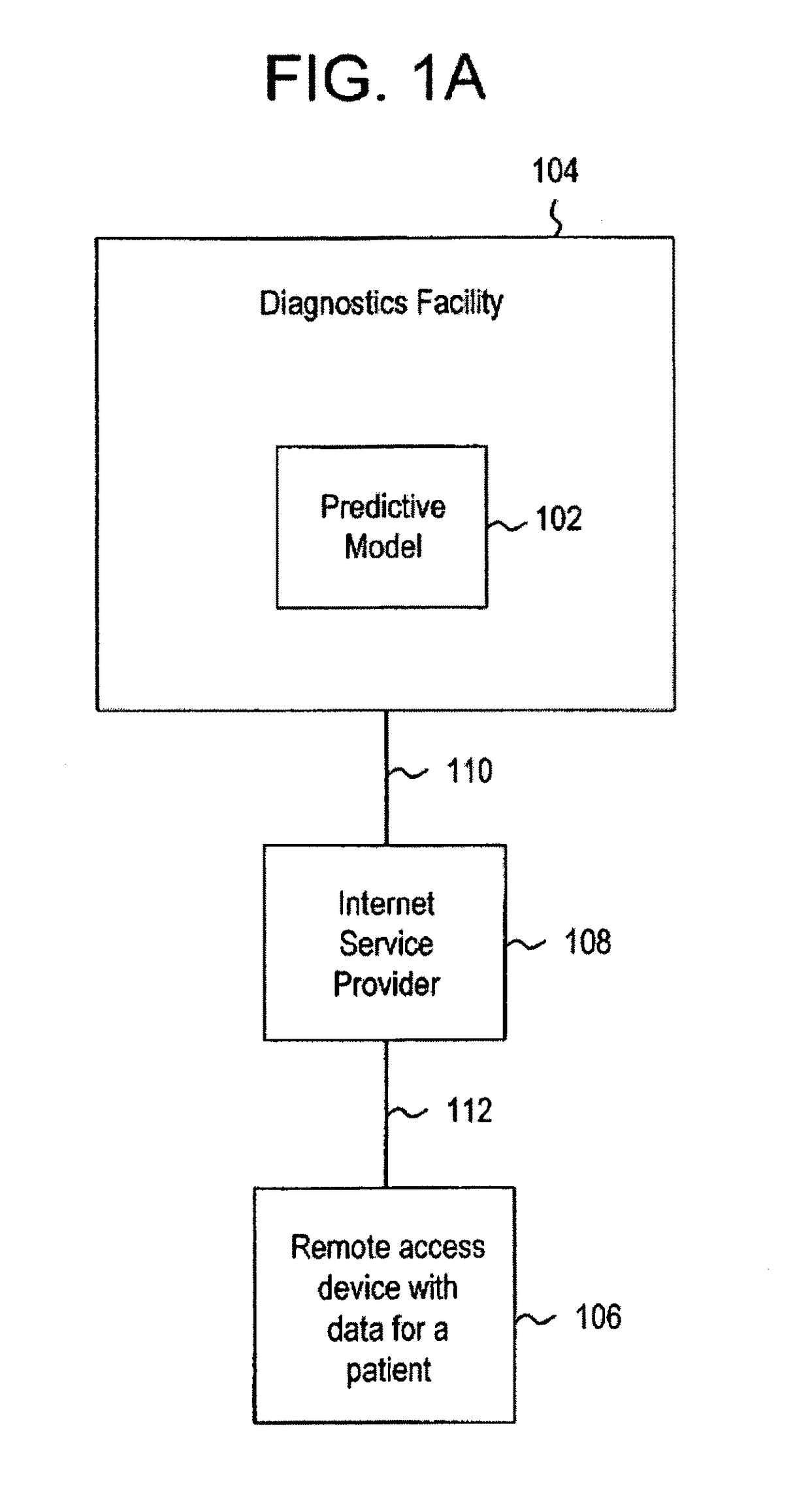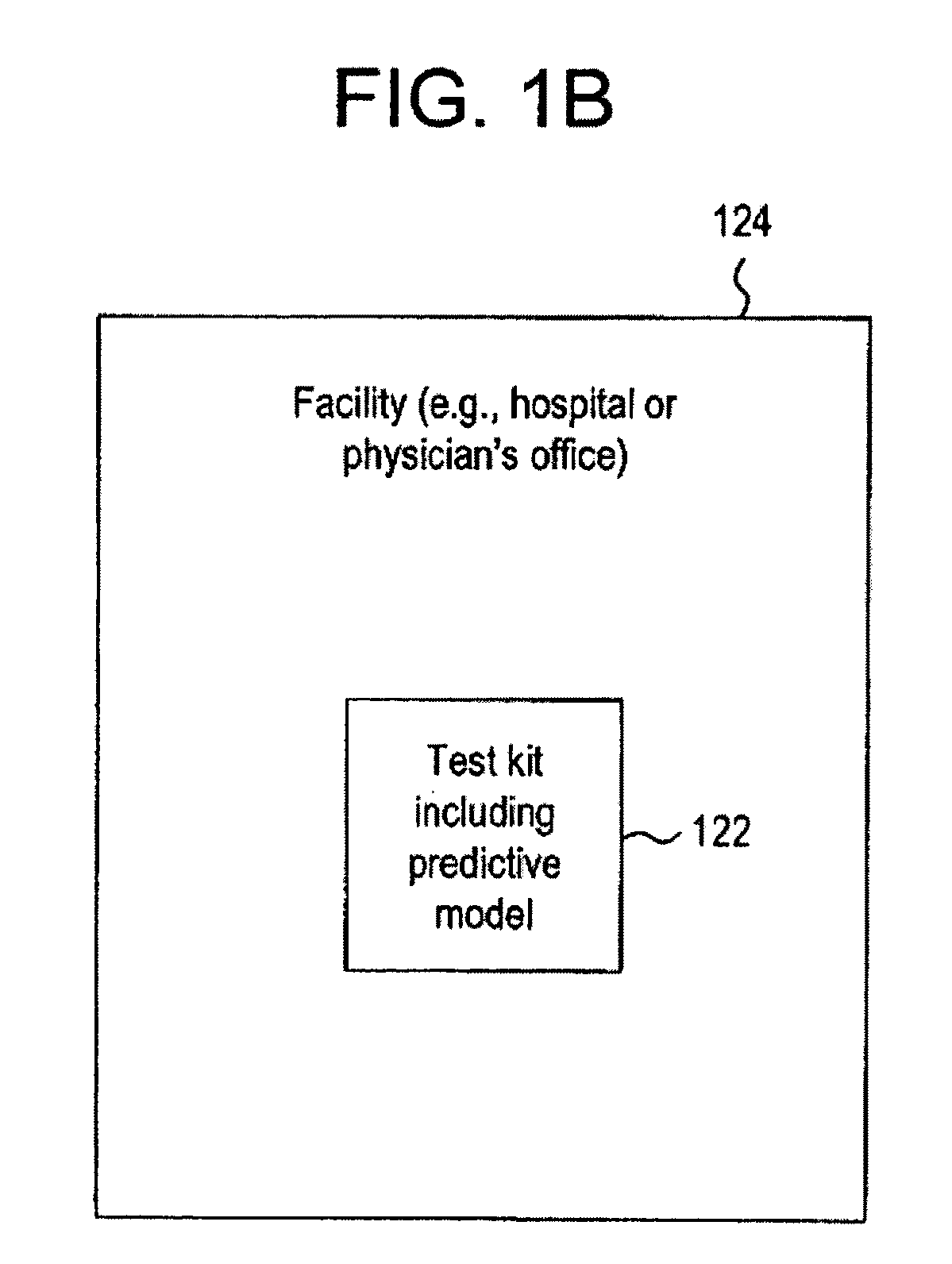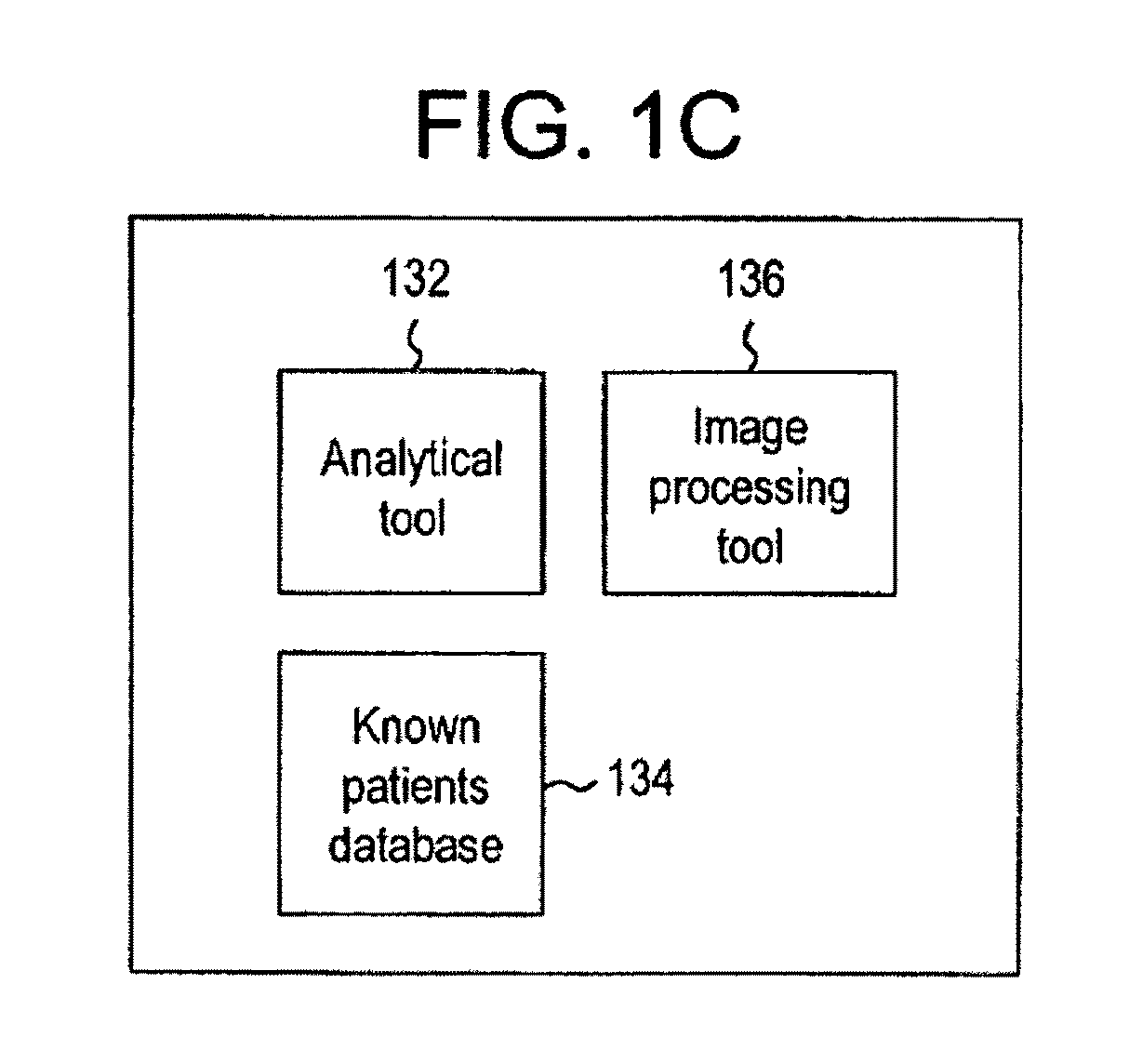Method and system for determining the risk of occurrence of prostate cancer
a prostate cancer and risk technology, applied in the field of prostate cancer risk determination, can solve the problems of conflicting interpretations, inconvenient diagnosis, and inability to accurately predict the occurrence of prostate cancer, and achieve the effect of more reliable and accurate image segmentation
- Summary
- Abstract
- Description
- Claims
- Application Information
AI Technical Summary
Benefits of technology
Problems solved by technology
Method used
Image
Examples
Embodiment Construction
[0043]Embodiments of the present invention relate to methods and systems that use computer-generated morphometric information, clinical information, and / or molecular information in a predictive model for predicting the occurrence of a medical condition. For example, in some embodiments of the present invention, clinical, molecular and computer-generated morphometric information are used to predict the likelihood or risk of progression of a disease such as, for example, prostate cancer. In other embodiments, the teachings provided herein are used to predict the occurrence (e.g., presence, recurrence, or progression) of other medical conditions such as, for example, other types of disease (e.g., epithelial and mixed-neoplasms including breast, colon, lung, bladder, liver, pancreas, renal cell, and soft tissue) and the responsiveness or unresponsiveness of a patient to one or more therapies (e.g., pharmaceutical drugs). These predictions may be used by physicians or other individuals, ...
PUM
 Login to View More
Login to View More Abstract
Description
Claims
Application Information
 Login to View More
Login to View More - R&D
- Intellectual Property
- Life Sciences
- Materials
- Tech Scout
- Unparalleled Data Quality
- Higher Quality Content
- 60% Fewer Hallucinations
Browse by: Latest US Patents, China's latest patents, Technical Efficacy Thesaurus, Application Domain, Technology Topic, Popular Technical Reports.
© 2025 PatSnap. All rights reserved.Legal|Privacy policy|Modern Slavery Act Transparency Statement|Sitemap|About US| Contact US: help@patsnap.com



